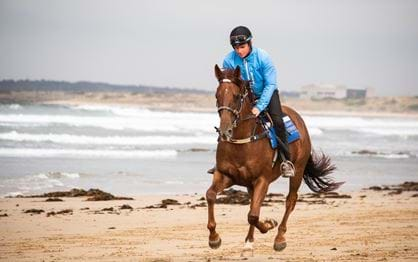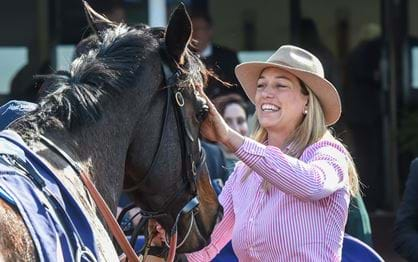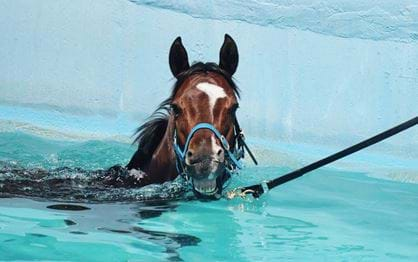Industry standards state that race tracks should be prepared to a Good 4 standard at the start of every race meeting, with the possibility of being upgraded to a Good 3. A Good 4 rating ensures that the turf is in the ideal condition. “It should have a good grass coverage and cushion with some give, so that it is not hard or jarring on a horse’s legs,” said Liam O’Keeffe, Senior Manager, Flemington.
So how does O’Keeffe and his team get the track perfectly prepared for race day, and achieve that Good 4 rating? “We measure the track with the Going Stick in 46 different locations each day and irrigation is applied that night to achieve the rating. In the lead-up to the Melbourne Cup Carnival we prepare it with lots of aeration and renovation. This allows water to be drained into the sand underneath,” O’Keeffe said.
The wet weather that descended upon Flemington during Cup Week 2019 might have looked to provide a challenge, but this didn’t worry O’Keeffe and the team of 48 who look after the track.
We tend to stay off it as much as we can during the Carnival and let nature take its course. It is in such good condition that any rainwater is absorbed overnight. - Liam O'Keeffe
Away from the race days, horses and their riders are also taken care of in everyday track work. In June 2019 the VRC opened a new $4.56 million state-of-the-art synthetic training track, which serves to keep our horses safer and more comfortable. Flemington’s dirt track was replaced with the synthetic surface which is used for jump outs as well as training.
The new 2200-metre track provides a more cushioned and forgiving surface for horses and reduces the training load on Flemington’s grass tracks, in turn helping with the condition of all other tracks including the course proper. The all-weather year-round surface enables jump outs to be held when the grass training tracks are unavailable due to wet weather.
Plastic running rails are also a preventative measure that Flemington tracks have in place to reduce the risk of injury. With more than 15,000 kilometres of plastic running rail installed at Flemington, it is another aspect of providing the safest environment possible. The design of the rails ensures that if a horse or rider should fall, the post breaks away on impact, drastically reducing the potential for injury.
The rail system consists of a ground tube, post, rail and the joint sleeve. This provides an effective connection between rails, and the secure fit of plastic posts to ground tubes means that superior support is provided for the rail at all times.
With such dedication channelled towards the care of Flemington’s tracks, it is evident that every effort is put towards ensuring the highest safety and wellbeing standards for the equine athletes that grace our world-class track.



